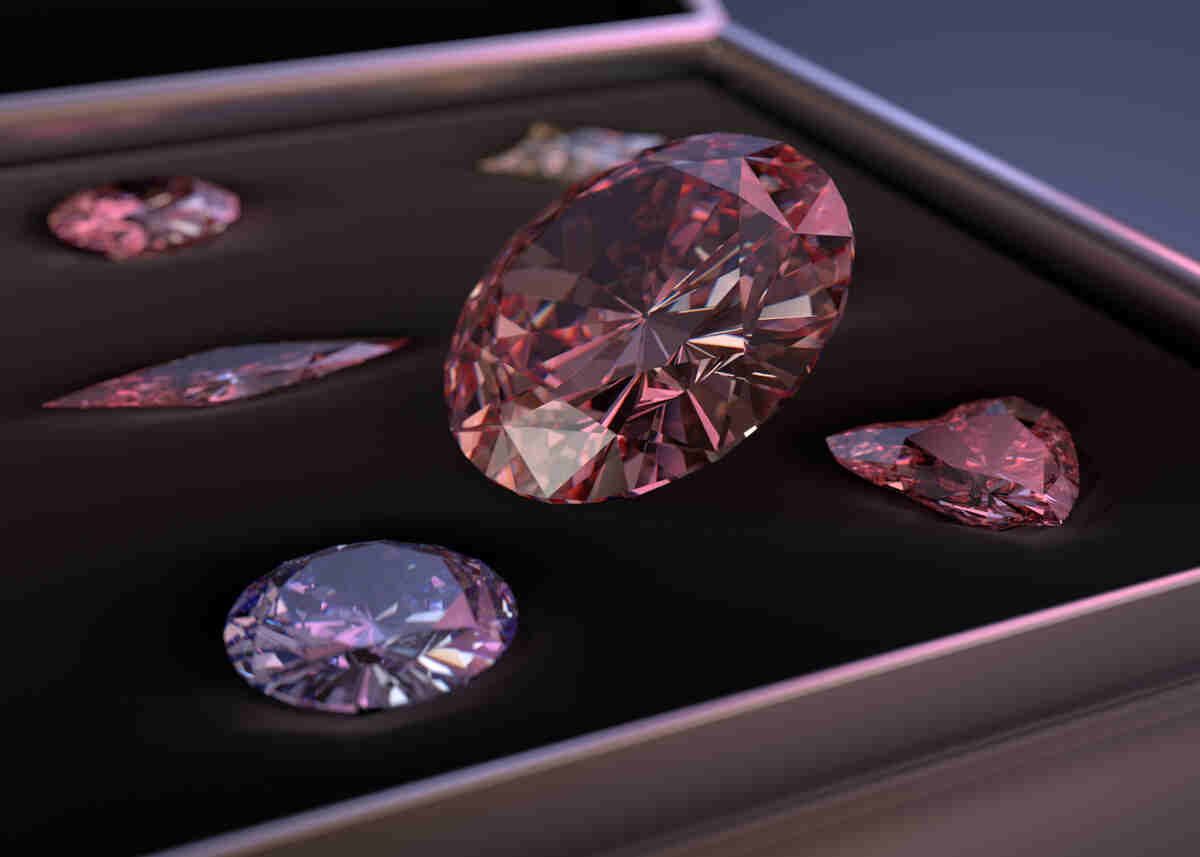Introduction
In the vast and mesmerizing world of diamonds, understanding the intricate terminology is akin to unlocking the secrets of these precious gems. Diamonds, with their timeless allure and unparalleled beauty, have fascinated humanity for centuries. From the dazzling sparkle of a perfectly cut stone to the subtle nuances of color and clarity, each diamond tells a unique story. However, to truly appreciate and navigate the realm of diamonds. One must grasp the terminology that defines their quality, characteristics, and allure.
Diamond terminology encompasses a diverse range of terms, each playing a crucial role in assessing the value and appeal of these remarkable gemstones. At the heart of diamond terminology lie the renowned “Four Cs”: cut, color, clarity, and carat weight. These pillars form the foundation upon which the quality of a diamond is evaluated. Guiding buyers and enthusiasts in their quest for the perfect stone.
Understanding Diamond Terminology: What Does TW Mean in Diamonds
Understanding diamond terminology is essential for anyone looking to purchase or appreciate these precious gemstones. Diamonds are graded and described using a specific set of terms that denote various aspects of their quality, appearance, and characteristics.
One of the most fundamental terms in diamond terminology is the “Four Cs”: cut, color, clarity, and carat weight. The cut refers to the diamond’s proportions, symmetry, and polish, which directly influence its brilliance and sparkle. Color grading assesses the presence of any tint in the diamond, with the most valuable diamonds being colorless or near-colorless. Clarity evaluates the presence of any internal flaws or external blemishes, with higher clarity grades indicating fewer imperfections. Carat weight measures the diamond’s size, with one carat equal to 200 milligrams.
Beyond the Four Cs, there are additional terms used to describe specific characteristics of diamonds. For example, “fluorescence” refers to a diamond’s tendency to emit a soft glow when exposed to ultraviolet light. While some people prefer diamonds with no fluorescence, others find that it adds a unique allure to the stone.Diamonds are also categorized based on their shape, such as round, princess, emerald, and pear, among others. Each shape has its own distinct characteristics and appeal, catering to different preferences and styles.
Understanding diamond terminology empowers consumers to make informed decisions when purchasing or comparing diamonds. By familiarizing themselves with these terms, buyers can better appreciate the unique qualities of each diamond and select. The one that best suits their preferences and budget.
TW vs. CT: Clarifying the Difference: What Does TW Mean in Diamonds
In the realm of technology and computing, abbreviations and acronyms abound. Often causing confusion for those not intimately familiar with the field. Two such terms that are frequently encountered are “TW” and “CT,” each carrying its own significance and connotations. Clarifying the difference between these terms is essential for understanding their respective contexts and applications.
TW, short for “Terminology Workshop,” typically refers to a dedicated session or event aimed at defining, refining, or standardizing the terminology used within a particular domain or discipline. These workshops bring together experts, stakeholders, and interested parties to discuss, debate, and ultimately establish agreed-upon terms and definitions. The goal is to promote clarity, consistency, and precision in communication. Ensuring that all involved parties are on the same page when discussing complex concepts or ideas.
On the other hand, CT stands for “Computed Tomography,” a sophisticated imaging technique used primarily in the medical field for diagnostic purposes. CT scans utilize X-rays and advanced computer algorithms to create detailed cross-sectional images of the body. Allowing healthcare professionals to visualize internal structures with exceptional clarity and precision. CT scans play a crucial role in diagnosing a wide range of medical conditions, from fractures and tumors to cardiovascular and neurological disorders, enabling timely and accurate treatment decisions.
While TW and CT may share the same abbreviation format, their meanings and applications are vastly different. TW pertains to the collaborative process of defining terminology, fostering clear communication and mutual understanding within a given field. In contrast, CT refers to a cutting-edge medical imaging technology that revolutionizes diagnostic capabilities, aiding in the detection, diagnosis, and management of various health conditions.
Implications of TW in Diamond Purchases: What Does TW Mean in Diamonds
When delving into the world of diamond purchases, understanding the significance of TW, which stands for “Terminology Workshop,” can profoundly impact the buying experience. Terminology workshops play a pivotal role in standardizing the language and criteria used to describe diamonds, ensuring clarity and transparency in the diamond market.By participating in TW sessions, industry professionals, jewelers, and consumers alike gain valuable insights into the nuances of diamond terminology. These workshops facilitate discussions on the intricacies of the “Four Cs” – cut, color, clarity, and carat weight – as well as other relevant factors such as fluorescence, shape, and optical properties. Through collaborative efforts, attendees work towards establishing consistent definitions and guidelines for assessing diamond quality, enabling more informed purchasing decisions.
For consumers, the implications of TW extend beyond mere terminology. By familiarizing themselves with the terminology agreed upon in these workshops, buyers can confidently navigate the diamond market. Discerning the quality and value of various stones with greater accuracy. Armed with knowledge about cut grades, color grades, clarity characteristics, and other relevant factors, consumers can make educated choices that align with their preferences and budgetary considerations.
Moreover, the standardization of diamond terminology through TW sessions promotes trust and credibility within the industry. When consumers encounter consistent language and grading criteria across different retailers and diamond laboratories. They are more likely to have confidence in the products they are purchasing. This transparency fosters a sense of trust and integrity, strengthening the relationship between buyers and sellers in the diamond market..
Quality vs. Quantity: Finding the Balance :What Does TW Mean in Diamonds
In various aspects of life, the age-old debate between quality and quantity continues to pose a dilemma for decision-makers. Whether it’s in relationships, work, or purchases, striking the right balance between quality and quantity is often key to achieving satisfaction and success.
When it comes to consumer goods, including diamonds, this balance is particularly crucial. On one hand, there’s the allure of quantity – the idea of having more, whether it’s more diamonds, more carats, or more pieces of jewelry. Quantity appeals to the desire for abundance and variety, offering a sense of opulence and extravagance. However, the pursuit of quantity alone can sometimes lead to compromises in quality. Mass-produced items or diamonds of lower quality may flood the market. Tempting buyers with their sheer abundance but lacking the exceptional craftsmanship and beauty that define true quality.
On the other hand, there’s the timeless appeal of quality – the notion of investing in excellence, craftsmanship, and authenticity. Quality speaks to discerning buyers who prioritize elegance, durability, and the intrinsic value of a product. In the realm of diamonds, quality translates to factors such as cut precision, color purity, clarity, and overall aesthetic appeal. While high-quality diamonds may come with a higher price tag and be rarer to find Their exceptional beauty and enduring value make them coveted treasures worth cherishing.
Finding the balance between quality and quantity in diamond purchases involves careful consideration of individual preferences, budgetary constraints, and long-term goals. While some may prioritize acquiring a larger number of diamonds or carats within their budget. Others may opt for fewer but higher-quality stones that exude luxury and sophistication. Ultimately, the right choice depends on personal values, lifestyle, and the significance attached to the purchase.
Decoding Diamond Certifications: What Does TW Mean in Diamonds
Diamond certifications serve as invaluable guides for consumers navigating the intricate world of diamond purchases. These documents, issued by reputable gemological laboratories, provide detailed assessments of a diamond’s quality, characteristics, and authenticity. Deciphering the information contained within diamond certifications empowers.Buyers to make informed decisions and ensure they are getting the quality they desire.
One of the most widely recognized diamond certification authorities is the Gemological Institute of America (GIA). GIA certifications are renowned for their thoroughness and credibility, providing an in-depth analysis of a diamond’s “Four Cs” – cut, color, clarity, and carat weight. Each aspect is meticulously graded and documented, allowing buyers to understand the precise qualities of the diamond they are considering.
Other prominent gemological laboratories, such as the American Gem Society (AGS) and the International Gemological Institute (IGI), also issue diamond certifications that adhere to rigorous standards. While the specific grading criteria may vary slightly among different laboratories.The overarching goal remains the same: to provide accurate and reliable assessments of a diamond’s attributes.
Decoding a diamond certification involves understanding the terminology and grading scales used by the issuing laboratory. For example, cut grades may range from “Excellent” to “Poor,” with each grade reflecting the diamond’s proportions, symmetry, and polish. Color grades typically follow a scale from “D” (colorless) to “Z” (light yellow or brown), with higher grades indicating greater color purity. Clarity grades assess the presence of internal flaws (inclusions) and surface blemishes (blemishes), ranging from “Flawless” to “Included” categories.
Ensuring Transparency and Trust: What Does TW Mean in Diamonds
In the dynamic marketplace of diamond purchases, ensuring transparency and fostering trust are paramount considerations for both buyers and sellers. Diamonds, with their enduring allure and significant monetary value, demand a high level of integrity and honesty in transactions. Establishing transparency and trust not only safeguards.The interests of consumers but also upholds the reputation and credibility of the diamond industry as a whole.
One of the primary mechanisms for ensuring transparency and trust in diamond purchases is through rigorous certification processes conducted by reputable gemological laboratories. These independent entities, such as the Gemological Institute of America (GIA), the American Gem Society (AGS), and the International Gemological Institute (IGI). Employ strict grading standards and procedures to assess the quality, characteristics, and authenticity of diamonds. By obtaining certifications from such laboratories, sellers provide buyers with verifiable evidence of a diamond’s quality. Instilling confidence and peace of mind in their purchase.
Transparent disclosure of information regarding a diamond’s origin, provenance, and any treatments or enhancements it may have undergone is another crucial aspect of fostering trust. Ethical and responsible sourcing practices. Such as adhering to the Kimberley Process Certification Scheme to prevent conflict diamonds from entering the market. Demonstrate a commitment to ethical standards and sustainability. Additionally, providing clear and accurate descriptions of a diamond’s attributes. Including its “Four Cs” (cut, color, clarity, and carat weight) and any relevant details about its craftsmanship and design.
Open communication and willingness to address any questions or concerns raised by buyers further contribute to building trust and credibility. Establishing channels for feedback, inquiries, and resolution of disputes helps maintain positive relationships between buyers and sellers. Fostering long-term loyalty and satisfaction.
Conclusion
In conclusion, understanding diamond terminology and factors such as total weight (TW) and carat weight (CT) is crucial for anyone considering purchasing diamond jewelry. By grasping these concepts, consumers can make informed decisions and ensure they get the best value for their investment. Quality should always be prioritized over quantity, and consumers should seek transparency and trust when buying diamond jewelry.
Reputable jewelers who provide detailed information, certifications. Excellent customer service are essential for fostering confidence in the authenticity and quality of diamond purchases. By finding the right balance between quality and quantity and prioritizing transparency and trust. Consumers can enjoy their diamond jewelry with confidence and satisfaction for years to come.




